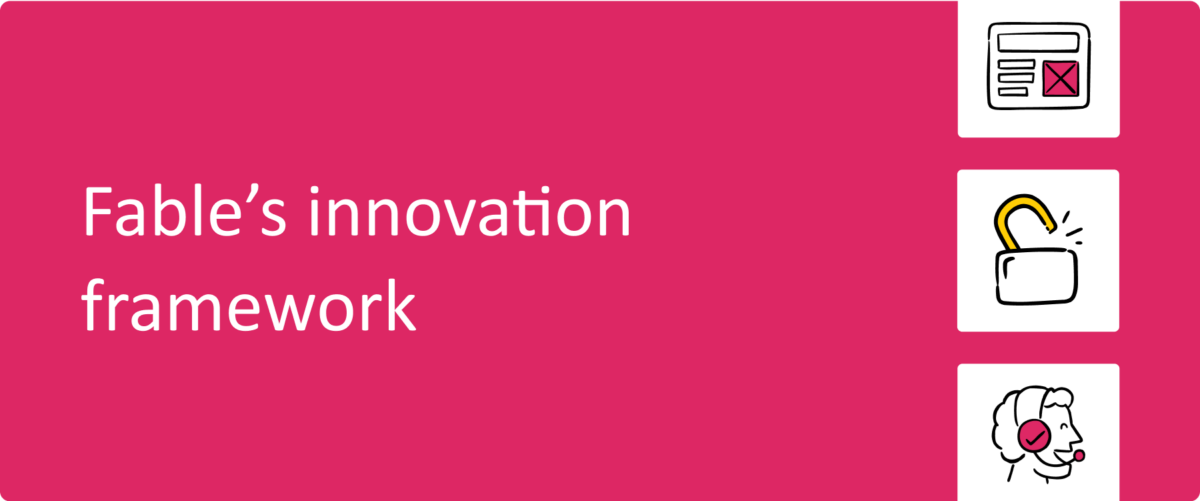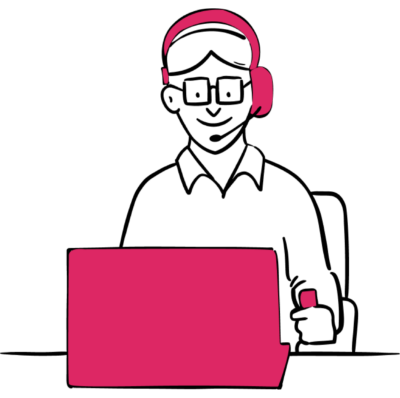
Why ambitious companies need to invest in innovation early
Lessons from Fable’s journey to Fast Company’s list of the World’s Most Innovative Companies for 2023
Fable was awarded the number five spot in the design category in Fast Company’s list of the World’s Most Innovative Companies for 2023. Fast Company’s list highlights businesses at the forefront of their respective industries who are paving the way for the innovations of tomorrow.
We are honored to join our customers, Figma and Microsoft, who are both exemplary groundbreaking innovators, on this list.
Learn more about Fable’s win in this press release.
Since receiving this award, we’ve received some questions on how we foster leading innovation at Fable from others who hope to do the same. We wanted to write this blog to highlight the power of innovation and how we have made it integral to Fable’s processes and ethos.
We’ll share some lessons from our innovation journey, including:
Why we invested in innovation early
Innovation, research, and development arms are often not the first thing early-stage companies think to invest in. Innovation is rather often regarded as something to invest in later, once your product and market fit have been well established.
To foster leading innovation, you should in fact do the opposite. Early investment in innovation has made Fable the company it is today.
Innovation forces you to be customer and industry obsessed. It requires you to stay in tune with your broader ecosystem. Through customer research and experimentation, you can learn more about your product and market fit. Innovation allows you to discover new customer pain points and diversify your areas of expertise.
Innovation also builds competitive advantage which in turn drives growth. Remain the industry leader your competitors are following without giving them a chance to catch up to your lead. Create more value for your ideal customers.
Innovation helps you be proactive in the marketplace instead of reactive. As you know, big road map changes or big shifts in organizational priorities can be extremely time-consuming and expensive. Instead of having to drastically shift your team’s priorities when customers’ expectations start to shift, investment in innovation helps you anticipate future customer needs and market trends.
Behind the scenes: Mission-driven innovation at Fable
To reap the full benefits from innovation, it should always be tied to and driven by a mission. This is a broad idea in theory, this is what it looks like in practice at Fable.
Fable’s mission is to:
Empower people with disabilities to participate in, contribute to, and shape society.
Accessibility, for us, is then about people with disabilities being able to fully participate as producers, contributors, and consumers. This is why our goal has been to fundamentally change how digital teams build products to incorporate usability for people with disabilities.
Accessibility innovation accordingly at Fable involves our teams learning directly from people with disabilities who use assistive technology. Including the many assistive technology users with disabilities in our community of testers, staff, leadership, and contractors. This is how we remain educated on how to avoid creating barriers and measuring meaningful progress along the way.
Fable’s approach to innovation centers the idea that those who have the most challenges using digital products or services hold the keys to the most meaningful innovations.
An innovation framework that drives ambitious goals
Fable’s innovation framework is made of the following principles and repeatable action items.
Build, measure, learn
Early stages of innovation may be research-heavy and center ideation. But later stages should have KPIs and OKRs to track success. You need to know which innovations to continue to invest in and which to pause or stop.
Understand customer problem deeply
Sometimes it’s okay to go down the rabbit hole, including its many connections and offshoots. Until we can frame a real problem clearly, we’re not ready to experiment and innovate.
Our innovation team is constantly learning about pain points felt by businesses committed to digital accessibility so that we can experiment with ways to solve the challenges that our customers face and help them make the digital world more accessible for everyone.
Accessibility IS innovation
Accessibility drives innovation. Think of the keyboard which evolved from the typewriter which was designed to help a blind Italian countess write letters. Or the electric toothbrush which is probably sitting in your bathroom that was designed for people with limited mobility to brush their teeth. Or any kind of voice control system (Alexa, Google, Siri, etc.) that started off as an assistive technology for disabled people.
Accessibility isn’t a barrier to design, development, or new products and services, it’s a constraint that fuels innovation.
Jeff Gothelf co-author of Lean UX says:
“Constraints provide focus and direction. They force tough prioritization decisions and push the team to be entrepreneurial.”
HBR reminds us that mindset is key:
“…the same constraint may be interpreted in different ways: as a motivating challenge or as a frustrating roadblock. … By framing constraints as creative challenges, managers can build an understanding of constraints as positives, and thus invite more creativity.”
Foster collaboration
Innovative research most often comes from collaboration. Merging perspectives from different organizations and lived experiences can push solutions from forgettable to industry changing.
Reach out
We are interested in having conversations with organizations and individuals looking to increase the accessibility of digital space. Over the years, Fable has built partnerships with several organizations to innovate together to create new offerings to customers and end users.
Schedule a call with Kate Kalcevich, Head of Accessibility Innovation at Fable, about innovation partnerships and making the digital world more accessible for everyone.
Thank you
The work and innovation at Fable are not possible without our community of accessibility testers, made of assistive technology users with disabilities. Thank you. And to our customers who together are making the digital world more accessible and usable for everyone, thank you.

